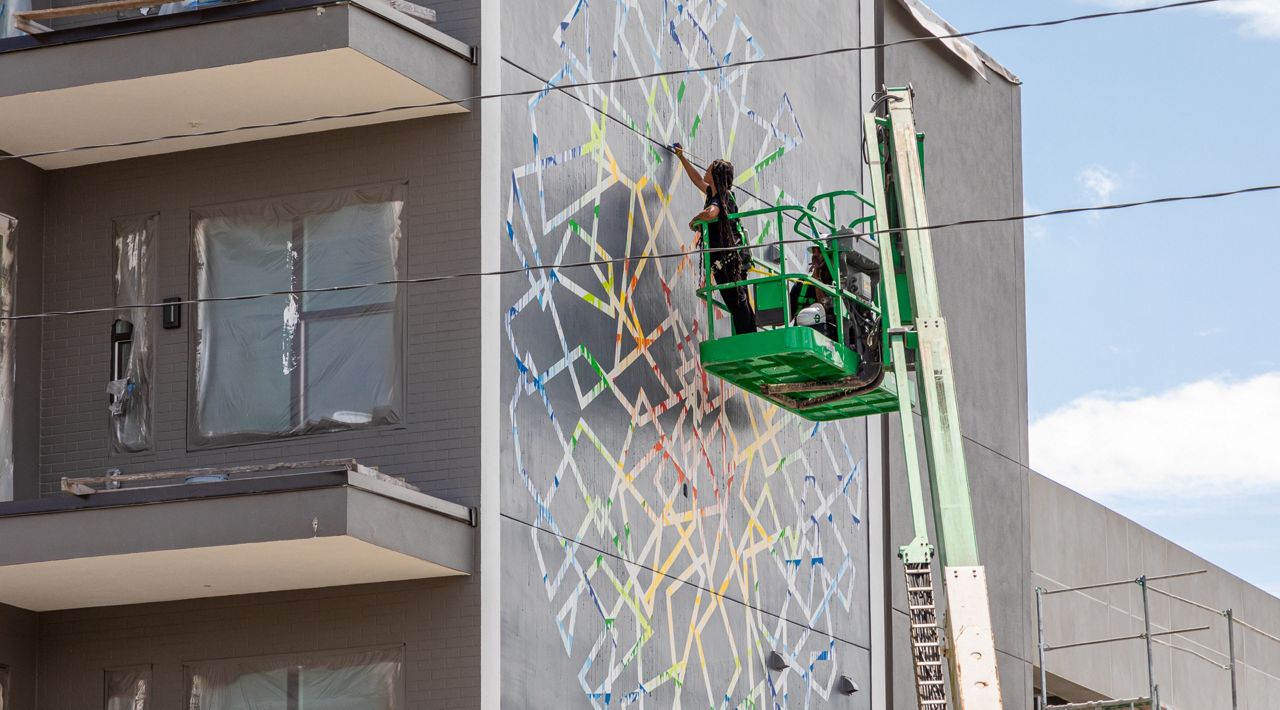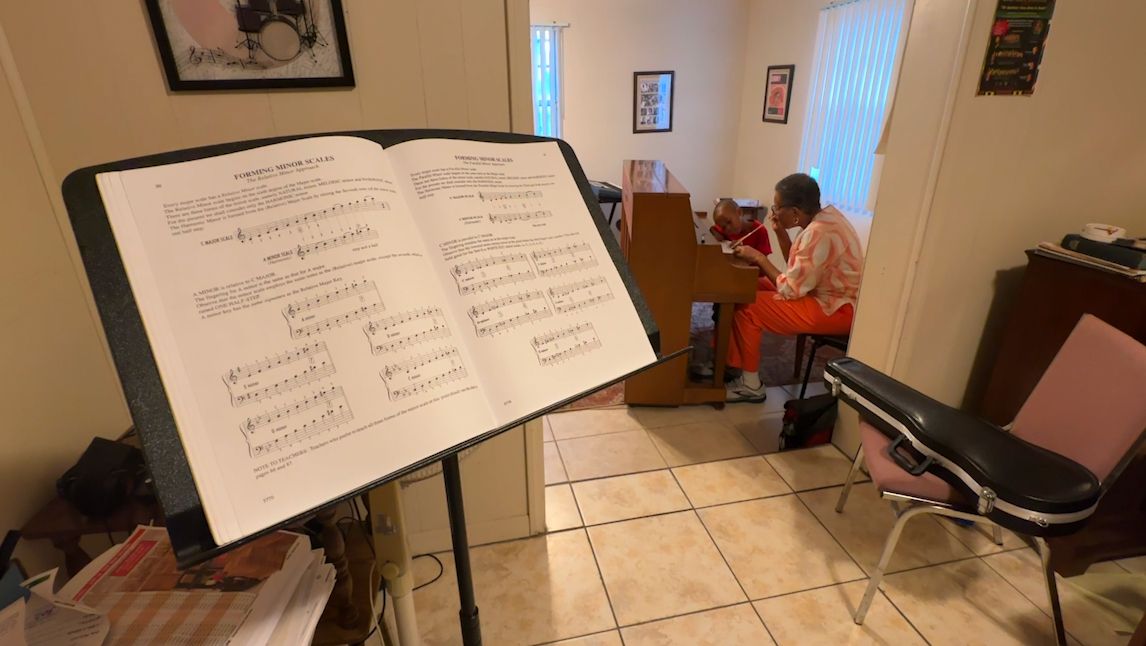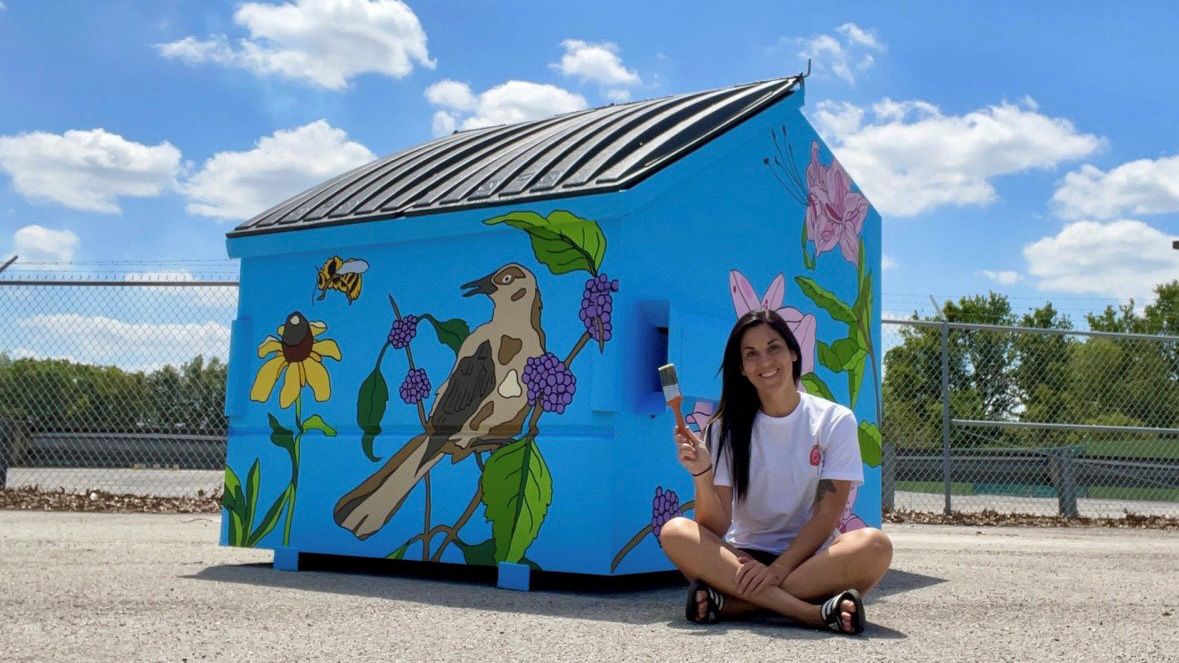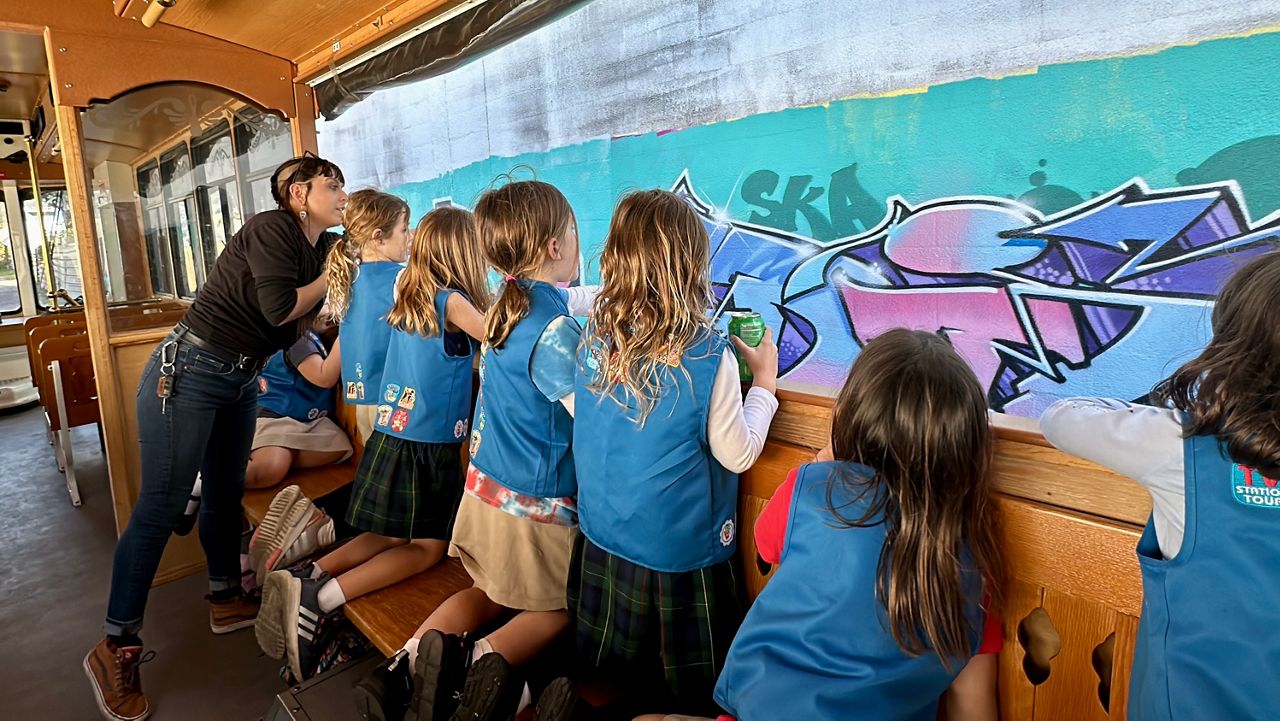ST. PETERSBURG, Fla. — Welcome to 9 Questions with…, an exclusive Spectrum Bay News 9 feature in which we get to know some of the Bay area’s movers and shakers a little better. It could be a politician, an artist, a first responder, a bartender—just about anyone, really. This week’s subject is visual artist and educator Ya La'ford. Is there someone you’d like to answer 9 Questions? Let us know!
What You Need To Know
- Spectrum Bay News 9's series spotlights notable members of the Tampa Bay community
- Ya La'ford's ambitious, compelling geometric designs are all over the region
- Check back every week for a new "9 Questions with..."
Are you a Tampa Bay native? If not, where are you from?
I was born in the Bronx and am a first-generation American. My parents are from Jamaica, so I have always been deeply aware of the social, economic, and cultural contexts of diverse communities. While my roots are in New York, I love living in Tampa and raising my family here.

How would you describe your job or claim to fame?
I am defined as a visual artist; however, I consider myself an educator and, foremost, a transporter working between the visual and our community through various mediums, including paint, sculpture, installation, video, and sound. Each work is built with a unique vocabulary of intersecting lines and gestural repetition to create a distinctive visual impact.
What’s your favorite Tampa Bay restaurant?
I really enjoy spending time at the Oxford Exchange. It gives a worldly collage of ambiance, food, shopping and I believe it is the most enchanting space in our city.
Do you have a personal Tampa Bay “secret spot” and/or “hidden treasure”?
I love being close to the water. Sitting along the Hillsborough River feels grounding and recharges my batteries. That is why I am so excited to be a part of the West End Development project. Soon, our community will have an open space with a walking labyrinth park and land sculpture for contemplation and enjoyment.
What is your favorite Tampa Bay tradition?
I am a huge sports fan, especially when it comes to football. As a result, I enjoy going to Tampa Bucs games. I also love exploring.
What’s one thing many people don’t know about you that you’re willing to share with us?
I am really into enjoying the outdoors and exploring nature. Whenever possible, I can be found in a remote campground, fishing, riding ATVs and hovering over a campfire eating s’mores. I also love to read — I find the journey of our mind to be a remarkable [phenomenon], escaping into amazing novels further deepens my interactions with other people, keeps my brain sharp, and best of all expands my worldviews and I can continue to grow and maintain a strong sense of inquiry. These stories also allow me to feel connected with others and part of something bigger than myself.
If you could change one thing about the Tampa Bay area or your community specifically, what would it be?
MORE LOVE! It’s so simple yet vital to our happiness and well-being. Dropping the lines of hate and opening our hearts to deeper understanding of each other through listening, conversations, and empathy. We are all interconnected and it is my hope that the support for the arts in Tampa and St. Pete is part of the path of the heart.
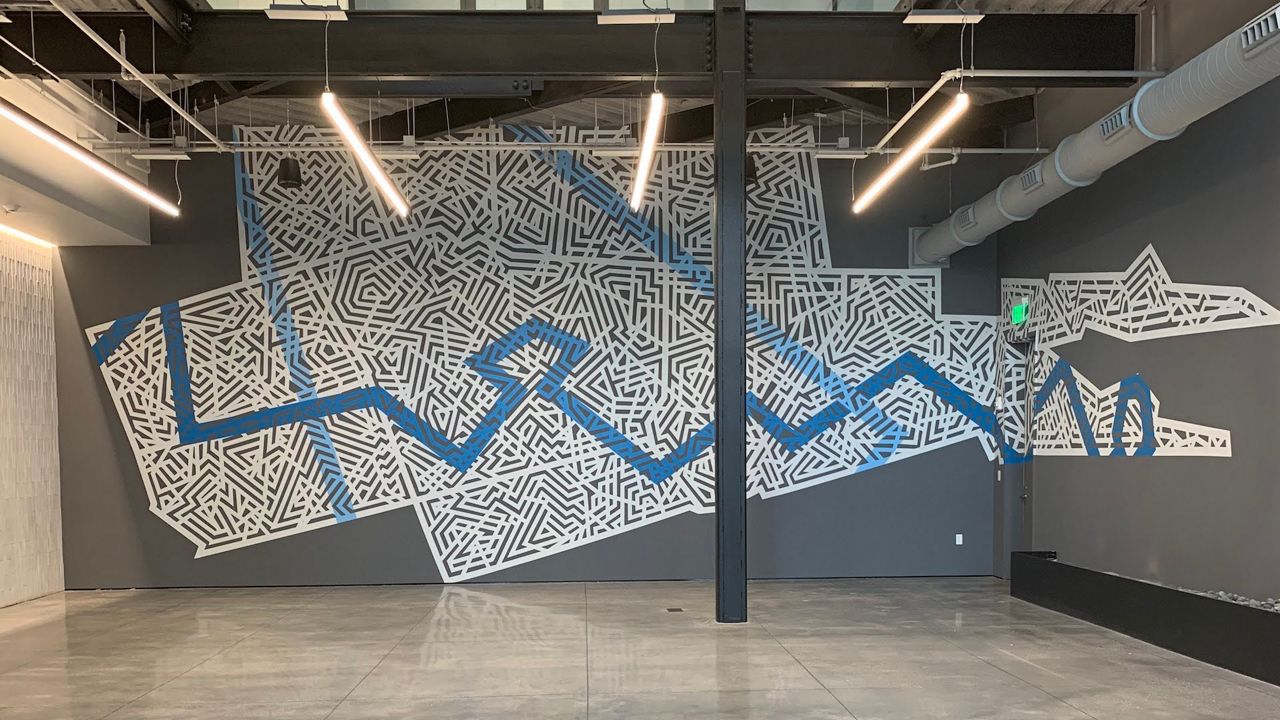
Much of your work includes geometric figures/patterns — can you tell us how or why they became such a significant element of your art?
I was inspired by my travels around the world, visiting the temples in Egypt, the Great Wall of China, the lush mountains of Colombia. I started to feel a story in each space with wisdom in patterns and a historic communication in humanity’s unseen experiences within the intricacies of geometric-laden layers united through interconnecting lines. It becomes the power of a line. Each line has a philosophical journey, entangling memories, stories and connecting ancient civilizations with contemporary creations.
How important do you think it is that art remains an integral part of public education?
Making art available to our children and providing them with hands-on opportunities to experience art is essential. Almost every project I do combines a community-involvement portion. For example, I’ve invested with the children of Mt. Zion Academy in St. Pete and have been working with 100 kids there to offer extracurricular [activities] in the arts. Through partnerships, we have taken those kids to every major museum and cultural center in our region. Next week, we go to the Ringling [Museum] for a tour, and they will be planting a tree in the arboretum. The tree gives them a connection to place and serves as a reminder that they are a part of this community. That people care about them.




